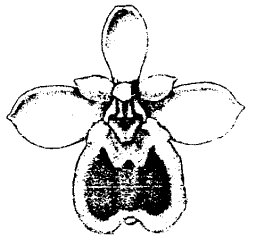 |
Science Frontiers ONLINE No. 54: Nov-Dec 1987 |
|
|
Honest, this is the last "plant" item!
In the September issue of Scientific American, S.C.H. Barrett presents an excellent review of mimicry in the plant world. All sorts of wondrous mimicry are described, involving form, color, odor, texture and even synchrony of life cycles. Plants mimic insects, stones, other plants, and substrates (backgrounds). Repeatedly, Barrett asserts that all of these remarkable developments are the consequence of small, randome mutations guided by the forces of natural selection. To Barrett, plant mimicry is proof positive that evolution is true. It should not surprise the readers of Science Frontiers that this very same article is a goldmine of biological anomalies, that is, data that seem to challenge ruling paradigms.
(Barrett, Spencer C.H.; "Mimicry in Plants," Scientific American, 257:76, September 1987.)
Comment. Evolution, like beauty, must be in the eye of the beholder! At this point, we could easily launch into a lengthy harangue about why it seems highly improbable that a plant, through chance mutations, could hit upon just the right combination of form, color, odor, and flowering time to dupe an insect pollinator -- even with the aid of natural selection and a billion years. The point we wish to stress here is that the author of this paper sees the same facts and comes to diametrically opposite conclusions!
Reference. Our handbook Incredible Life devotes and entire chapter to the anomalies of the plant kingdom. For further information, visit: here.
 | This Orchid flower mimicks a female bee, thus encouraging pollination by male bees. |